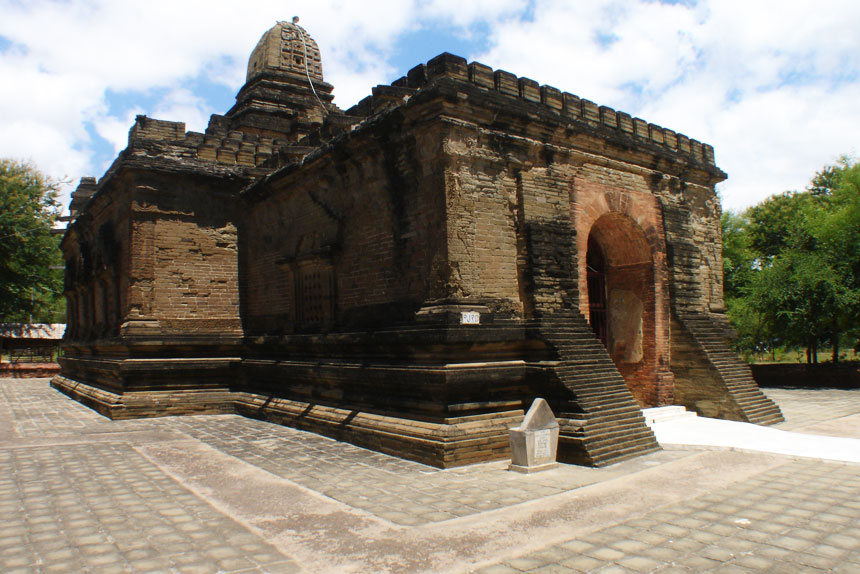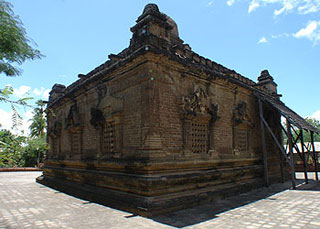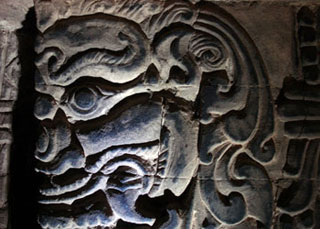Nanpaya Temple was built in the 12th Century this attractive pagoda is a combination of sandstone and brick. particularly noteworthy is the elegant perforated stone windows. The four primary stone pillars in the central sanctuary illustrate the Hindu god Brahma. It was built by King Narapatti Sithu’s son-in-law. Naga Thaman. He was also the grandson of King Manuha. This pagoda lies south of Manuha Image. It is one of four Bagan monuments built of sandstones. The other three are Shwezigon. Kyauk Ku Umin and Set Ku Taik.
Structure
The architectural structure of Nan-Paya Pagoda is unique. The inner walls were built of baked bricks whereas the outer walls were built of sandstones. It was built on the palace site where King Manuha. king of Thaton had resided. It is traditionally said that the king’s great grandson Naga Tha-man built Nan-paya Pagoda. The date of its building was guessed either late A. D. 11th century or early A. D. 12th century. The unique feature of Nan-paya Pagoda is the decorative artworks which adorn the four pillars of the interior chamber. On each of these four pillars are two stone reliefs of Brahma skillfully executed on stone and stone relief’s of ogres holding in their mouths bunches of intricate floral designs. done by master craftsmen. The Brahmas have three heads each. with obese pouch bell^y squatting on the lotus thrones. Lotus buds. blooms. stems. roots and leaves decorate the backdrops. The stone blocks were laid so neatly and tightly that the joints were concealed from view. The sculpturing works were executed on them. As these artworks are quite preserved in the interior of the chamber. well protected from sunlight and rain. traces of original colours on the reliefs of ogre figures and floral designs are still visible. In the centre of the chamber is a brick devotional throne but there is no image on it. But there must have been either a bronze or stone image on it. The Hindu style of its architecture. the presence of Brahma figures and the model of the brick devotional throne make some scholars think that Nan-paya Pagoda was originally a Hindu temple.
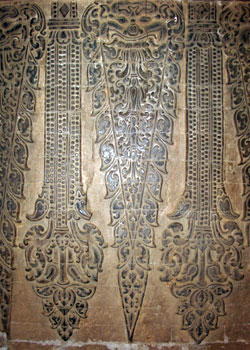
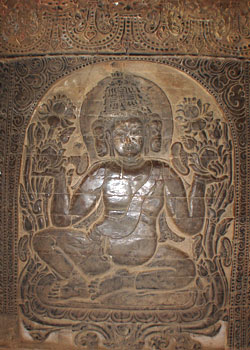
Similarly we find Brahma figure in Mye Bon Tha Paya Hla pagoda. In the chamber of this pagoda is a central pillar around which were presented four episodes from the life of the Buddha in statues— the Nativity on the north side. the Enlightenment on the east side the first sermon on the south side and the attainment of Parinivirna on the west side. Along the bases of the thrones of Buddha statues are 51 Brahma figures done in stone. worshipping the Buddha. Mye Bon Tha Paya Hla Pagoda is definitely a Buddhist building. Therefore the presence of Brahma figure or picture in Nan-paya Pagoda does not necessarily prove that that building is Hindu. The builders of Nan-paya. Naga Tha-man. the great grand¬son of King Manuha was a Buddhist and so were his an¬cestors. There are decorative artworks adorning the external base of the structure. They have Buddhist and Mon motifs such as Kalatha pots with lotus flowers and Kanote floral designs and figures of Hamsa (Brahmany duck) which was the crest of the Mons. The perforated windows have stone sculptures of floral design. These decorative artworks are very much similar to those at the other Buddhist monuments like Myin Kaba Gupyauk-Gyi. Abe-Yadana. and Hpyat Sa Shwe Gu. The ornamental backdrops above the windows have the figures of Makara. Thiri goddesses and Kalatha pots with scarf or ribbons around them.

